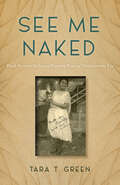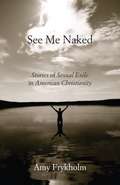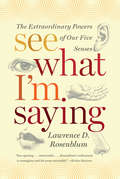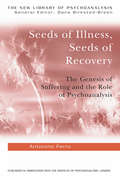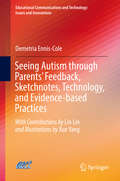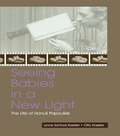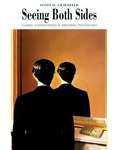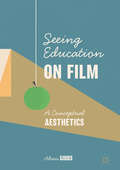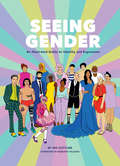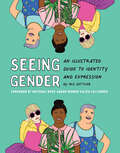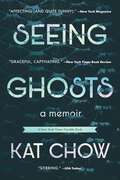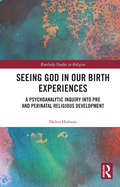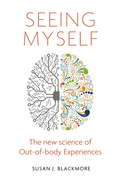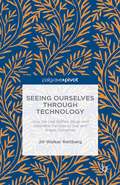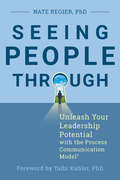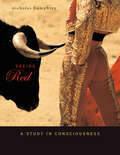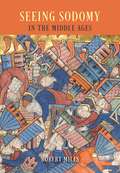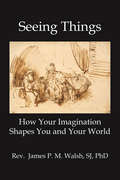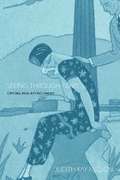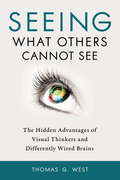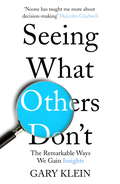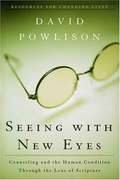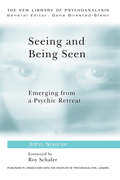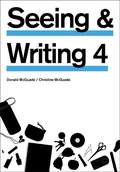- Table View
- List View
See Me Naked: Black Women Defining Pleasure in the Interwar Era
by Tara T. GreenPleasure refers to the freedom to pursue a desire, deliberately sought in order to satisfy the self. Putting pleasure first is liberating. During their extraordinary lives, Lena Horne, Moms Mabley, Yolande DuBois, and Memphis Minnie enjoyed pleasure as they gave pleasure to both those in their lives and to the public at large. They were Black women who, despite their public profiles, whether through Black society or through the world of entertainment, discovered ways to enjoy pleasure.They left home, undertook careers they loved, and did what they wanted, despite perhaps not meeting the standards for respectability in the interwar era. See Me Naked looks at these women as representative of other Black women of the time, who were watched, criticized, and judged by their families, peers, and, in some cases, the government, yet still managed to enjoy themselves. Among the voyeurs of Black women was Langston Hughes, whose novel Not Without Laughter was clearly a work of fiction inspired by women he observed in public and knew personally, including Black clubwomen, blues performers, and his mother. How did these complicated women wrest loose from the voyeurs to define their own sense of themselves? At very young ages, they found and celebrated aspects of themselves. Using examples from these women’s lives, Green explores their challenges and achievements.
See Me Naked: Stories of Sexual Exile in American Christianity
by Amy FrykholmSee Me Naked takes us deep into the complex, intimate intersection of sexuality and spirituality. Telling the stories of nine ordinary people and the religious worlds they were raised in, Amy Frykholm takes us beyond the shockingly regular headlines of sexual scandal in the church to ask how Christian cultures in America affect our sexuality. A man named Matthew shows the intricate relation between his religious faith and his sexual addiction; another man defines religion as a wall that kept him from the discovery that he was gay, while a young woman uses sex to defy her devout parents. Many of these stories diagnose a troubled culture of religion and sex, but Frykholm's point is not to indict Christianity. Instead the book points toward how American Christians might make better use of their tradition to heal the divide between religion and sexuality. Nearly everyone interviewed for the book remains a Christian, yet each has undergone significant transformation to reach reconciliation.
See What I'm Saying: The Extraordinary Powers of Our Five Senses
by Lawrence D. Rosenblum"Eye-opening . . . memorable. . . . Rosenblum's enthusiasm is contagious and his prose accessible."--Kirkus Reviews In this revealing romp through the mysteries of human perception, University of California psychologist Lawrence D. Rosenblum explores the astonishing abilities of the five senses--skills of which most of us are unaware. Drawing on groundbreaking insights into the brain's plasticity and integrative powers, Rosenblum examines how our brains use the subtlest information to perceive the world. A blind person, for example, can "see" through bat-like echolocation, wine connoisseurs can actually taste the vintage of an obscure wine, and pheromones can signal a lover's compatibility. Bringing us into the world of a blind detective, a sound engineer, a former supermodel, and other unforgettable characters, Rosenblum not only illuminates the science behind our sensory abilities but also demonstrates how awareness of these abilities can enhance their power.
Seeds of Illness, Seeds of Recovery: The Genesis of Suffering and the Role of Psychoanalysis (The New Library of Psychoanalysis)
by Antonino FerroIllustrated with richly detailed clinical vignettes, Seeds of Illness, Seeds of Recovery offers a fascinating investigation into the origins, modes and treatment of psychical suffering. Antonino Ferro provides a clear account of his conception of the way the mind works, his interpretation of the analytic understanding of psychopathology, his reconceptualization of the therapeutic process, and implications for analytic technique derived from his view of the therapeutic action of psychoanalysis. Drawing on and developing the ideas of Wilfred Bion, Ferro gives a unique perspective on subjects including: Container Inadequacy and Violent Emotions The waking dream and narrations 'Evidence': starting again from Bion Self-analysis and gradients of functioning in the analyst. This highly original approach to the problem of therapeutic factors in psychoanalysis will be of interest to all practising and training psychoanalysts and psychotherapists.
Seeing Autism through Parents’ Feedback, Sketchnotes, Technology, and Evidence-based Practices (Educational Communications and Technology: Issues and Innovations)
by Demetria Ennis-ColeSeeing Autism is a comprehensive but easy-to-understand guidebook for caretakers, parents, educators, counselors, therapists, and researchers on various aspects of rearing and supporting children with autism spectrum disorder. It provides textual and visual information on technology tools, symptoms, diagnosis, auditory, sensory, visual, physical, and educational issues, as well as strategies and practices to help children on the Autism Spectrum reach their potential. Seeing Autism uniquely capitalizes on sketchnotes, a visual thinking tool, to communicate information and practices. Sketchnotes provide a unique space that can help the reader think differently, generate a variety of ideas, explore alternatives, and develop constructive points for expressing ideas and developing visual communication aids. This book will assist parents, educators, and professionals in schools (counselors, school psychologists, librarians) who work with children diagnosed with ASD; it will help readers increase their knowledge of autism and gain an appreciation for evidence-based practices and forms of technology that can be used to support learners on the autism spectrum. “This book is a call to arms and is as much a resource for the family friend as it is for the provider coming to the home. In the book Seeing Autism, Dr. Demetria Ennis-Cole helps individuals gain an incredible perspective and learn the struggles, challenges and joys of families rearing children, teens and adults on the spectrum. This book covers the entire spectrum and is a fantastic mix of research, parent perspective, and even sketchnotes for visual learners. The material is well-balanced and is a great resource to support individuals on the spectrum at home, in the community or in the classroom." Brad McGarryFather, Speaker, Author and Director of the Autism Initiative at Mercyhurst University
Seeing Babies in a New Light: The Life of Hanus Papousek
by Otto KoesterSeeing Babies in a New Light: The Life of Hanus Papousek presents the first in-depth examination of the scientific contributions and life of Hanus Papousek (1922-2000), a leading figure in modern infancy research. The aim is to illuminate the research and ideas of this pediatrician and scholar who was one of the first to examine systematically the world of newborns, a relatively new area of developmental research in the mid-20th century.Papousek's pioneering studies of infants in the early 1950s in Prague are examined to show how his early conditioning studies, together with those of a handful of other researchers in the U.S., shattered prevailing views of infancy in both the East and West. The book also investigates how Papousek and his work, despite Cold War attitudes and restrictions, gradually gained international attention in the early 1960s. In 1970, he left Czechoslovakia to begin a new life in the West, first at Harvard University, and then at the Max-Planck Institute for Psychiatry in Munich. Until his retirement, Papousek published many innovative studies on parent-infant interactions and developed a theory of Intuitive Parenting with his wife, Mechthild. These theoretical and methodological contributions are discussed, as well as contemporary applications to interventions in the area of infant mental health.This book appeals to teachers and professionals working in the fields of developmental psychology, early childhood education, infancy studies, parenting, and the history of psychology--as well as students preparing for careers in these areas.
Seeing Both Sides: Classic Controversies in Abnormal Psychology
by Scott O. LilienfeldAbnormal psychology is an enormously exciting, and yet at times greatly frustrating, discipline. What often makes the study of abnormal psychology frustrating to students is the multiplicity of opposing viewpoints on so many of the issues that occupy this field's center stage.
Seeing Education on Film: A Conceptual Aesthetics
by Alexis GibbsThis book argues that certain films have more to offer by way of conceptualising education than textual scholarship. Drawing on the work of the later Wittgenstein, it suggests that a shift in our philosophical focus from knowing to seeing can allow for ordinary educational phenomena (teachers, schools, children) to be appreciated anew. The book argues that cinema is the medium best placed to draw attention to this revaluation of the everyday, and particular films are presented as offering unique insights into the aesthetic nature of education as a concept. The book will be of primary interest to educators and educationalists alike, but its interdisciplinary nature should also appeal to those in the fields of film study, philosophy, and aesthetics.
Seeing Gender: An Illustrated Guide to Identity and Expression
by Iris GottliebSeeing Gender is an of-the-moment investigation into how we express and understand the complexities of gender today. Deeply researched and fully illustrated, this book demystifies an intensely personal—yet universal—facet of humanity. Illustrating a different concept on each spread, queer author and artist Iris Gottlieb touches on history, science, sociology, and her own experience. This book is an essential tool for understanding and contributing to a necessary cultural conversation, bringing clarity and reassurance to the sometimes confusing process of navigating ones' identity. Whether LGBTQ+, cisgender, or nonbinary, Seeing Gender is a must-read for intelligent, curious, want-to-be woke people who care about how we see and talk about gender and sexuality in the 21st century.
Seeing Gender: An Illustrated Guide to Identity and Expression
by Iris GottliebNow with a new foreword by National Book Award Winner Kacen Callender, this fascinating book on a relevant subject illustrates the complexities of gender and sexuality through history, science, sociology, and the author's own story.Gender is an intensely personal, yet universal, facet of humanity. In this vibrant book, queer author and artist Iris Gottlieb visually explores gender in all of its complexities, answering questions and providing guidance while also mining history and pop culture for the stories and people who have shaped the conversation on gender.Informed by Gottlieb's personal experiences, this deeply researched and brilliantly rendered book demystifies this fluid topic at a critical time. For LGBTQIA+ people, Seeing Gender offers a space for self-exploration, giving comfort, advice, and reassurance in the sometimes confusing process of navigating one's identity. For allies, this book is an essential tool for understanding and thoughtfully participating in this necessary cultural conversation. Whatever one's position, Seeing Gender is a must-read people who are passionate about changing the way we see and talk about gender and sexuality in the twenty-first century.CULTURALLY RELEVANT AND IMPORTANT TOPIC: An inclusive, sensitive, and accessible book for those interested in learning more about gender identity and sexuality.HELPFUL: The perfect book for nonjudgmental exploration of gender for the queer, transgender, asexual, uncertain, and for people struggling with their gender identity.INVITATIONAL: A wonderful intro to thoughtfully participating in this important conversation.Perfect for:• Those exploring their gender identity and sexuality• Parents/friends/relatives of those exploring their gender identity and sexuality• LGBTQ+ people• Allies who want to understand, empathize, and participate in this movement
Seeing Ghosts: A Memoir
by Kat ChowFor readers of Helen Macdonald and Elizabeth Alexander, an intimate and haunting portrait of grief and the search for meaning from a singular new talent as told through the prism of three generations of her Chinese American family.Kat Chow has always been unusually fixated on death. She worried constantly about her parents dying---especially her mother. A vivacious and mischievous woman, Kat's mother made a morbid joke that would haunt her for years to come: when she died, she'd like to be stuffed and displayed in Kat's future apartment in order to always watch over her. After her mother dies unexpectedly from cancer, Kat, her sisters, and their father are plunged into a debilitating, lonely grief. With a distinct voice that is wry and heartfelt, Kat weaves together a story of the fallout of grief that follows her extended family as they emigrate from China and Hong Kong to Cuba and America. Seeing Ghosts asks what it means to reclaim and tell your family&’s story: Is writing an exorcism or is it its own form of preservation? The result is an extraordinary new contribution to the literature of the American family, and a provocative and transformative meditation on who we become facing loss.
Seeing God in Our Birth Experiences: A Psychoanalytic Inquiry into Pre and Perinatal Religious Development. (Routledge Studies in Religion)
by Helen HolmesThere has been a recent surge in the examination of the evolutionary roots of religious belief, all trying to identify where the human desire to seek the supernatural and the divine comes from. This book adds a new and innovative perspective to this line of thought by being the first to link prenatal and perinatal experiences to the origins of these unconscious underpinnings of our shared images of God. The book poses a ground-breaking paradigm by thinking about our earliest images of God, whether theist or atheist, within a psychoanalytic framework, comparing and contrasting the thought of Freud and Rizzuto. It looks at the issue of images of God from a diversity of psychological perspectives including, attachment theory, developmental theory and bio-psychosocial perspectives. This analysis leads to the conclusion that in parallel to postnatal findings, uterine and birth experiences can predispose individuals to form God representations later in life, through underpinning affective and environmental factors. This is a bold study of the development of one of humanity’s most fundamental aspects. As such, it will be of great interest to scholars of the psychology of religion, psychology, psychoanalysis, religious studies and early infant development.
Seeing Myself: What Out-of-body Experiences Tell Us About Life, Death and the Mind
by Susan BlackmoreEssential reading for anyone seeking to understand their own mind and to find a spiritual path that is compatible with scienceAs an impressionable young student, Susan Blackmore had an intense, dramatic and life-changing experience, seeming to leave her body and travel the world. With no rational explanation for her out-of-body experience (OBE) she turned to astral projection and the paranormal, but soon despaired of finding answers. Decades later, a Swiss neurosurgeon accidentally discovered the spot in the brain that can induce OBEs and everything changed; this crucial spot is part of the brain's self-system and when disturbed so is our experience of self. Blackmore leaped back into OBE research and at last began to unravel what had happened to her. Seeing Myself describes her long quest for answers through spirituality, religion, drugs, meditation, philosophy and neuroscience.Anyone can have an OBE, indeed 15 per cent of us have. Even more have experienced sleep paralysis, lucid dreaming and the creepy sense of an invisible presence. At last, with the advent of brain stimulation, fMRI scanning and virtual reality, all these phenomena are beginning to make sense. Long relegated to the very fringes of research, the new science of out-of-body experiences is now contributing to our understanding of consciousness and our very selves.
Seeing Myself: What Out-of-body Experiences Tell Us About Life, Death and the Mind
by Susan BlackmoreEssential reading for anyone seeking to understand their own mind and to find a spiritual path that is compatible with scienceAs an impressionable young student, Susan Blackmore had an intense, dramatic and life-changing experience, seeming to leave her body and travel the world. With no rational explanation for her out-of-body experience (OBE) she turned to astral projection and the paranormal, but soon despaired of finding answers. Decades later, a Swiss neurosurgeon accidentally discovered the spot in the brain that can induce OBEs and everything changed; this crucial spot is part of the brain's self-system and when disturbed so is our experience of self. Blackmore leaped back into OBE research and at last began to unravel what had happened to her. Seeing Myself describes her long quest for answers through spirituality, religion, drugs, meditation, philosophy and neuroscience.Anyone can have an OBE, indeed 15 per cent of us have. Even more have experienced sleep paralysis, lucid dreaming and the creepy sense of an invisible presence. At last, with the advent of brain stimulation, fMRI scanning and virtual reality, all these phenomena are beginning to make sense. Long relegated to the very fringes of research, the new science of out-of-body experiences is now contributing to our understanding of consciousness and our very selves.
Seeing Ourselves Through Technology: How We Use Selfies, Blogs and Wearable Devices to See and Shape Ourselves
by Jill W. RettbergThis book is open access under a CC BY license. Selfies, blogs and lifelogging devices help us understand ourselves, building on long histories of written, visual and quantitative modes of self-representations. This book uses examples to explore the balance between using technology to see ourselves and allowing our machines to tell us who we are.
Seeing People Through: Unleash Your Leadership Potential with the Process Communication Model®
by Nate Regier, PhDNASA, Pixar Animation Studios, and BMW all use the Process Communication Model as a way of training leaders to connect effortlessly with anyone. This book simplifies the complex model to make it easy for anyone to use.Today, more than ever, leaders need a new style of leadership. They are realizing that true transformation happens through meaningful relationships, and discovering that the key to sustainable connections that create possibility and potential is through communication.In Seeing People Through, we take a deep dive into The Process Communication Model (PCM), a behavioral communication model that teaches people how to assess, connect, motivate, and resolve conflict by understanding the personality types that make up a person's whole self, which is the key to leveraging personality diversity.PCM is more than a lens for understanding how people see things differently; it's a deep journey into self-awareness and self-transformation. In this book, new emerging leaders, senior leaders, and seasoned consultants alike will develop a fresh and relevant framework on leadership that is consistent with emerging trends, and they will learn how individual and collective concerns can be reconciled in leadership.NASA, Pixar Animation Studios, and BMW are just some of the companies who have all used PCM as a way to build better relationships through authenticity, trust, agility, and positive influence-and now you can, too!
Seeing Red: A Study in Consciousness (Mind/Brain/Behavior Initiative)
by Nicholas Humphrey“A brilliantly inventive account of the evolution of consciousness, the best yet” (Paul Broks, Prospect).“Consciousness matters. Arguably it matters more than anything. The purpose of this book is to build towards an explanation of just what the matter is.” Nicholas Humphrey begins this compelling exploration of the biggest of big questions with a challenge to the reader, and himself. What’s involved in “seeing red”? What is it like for us to see someone else seeing something red?Seeing a red screen tells us a fact about something in the world. But it also creates a new fact—a sensation in each of our minds, the feeling of redness. And that’s the mystery. Conventional science so far hasn’t told us what conscious sensations are made of, or how we get access to them, or why we have them at all. From an evolutionary perspective, what’s the point of consciousness? Humphrey offers a daring and novel solution, arguing that sensations are not things that happen to us, they are things we do—originating in our primordial ancestors’ expressions of liking or disgust. Tracing the evolutionary trajectory through to human beings, he shows how this has led to sensations playing the key role in the human sense of Self.The Self, as we now know it from within, seems to have fascinating other-worldly properties. It leads us to believe in mind-body duality and the existence of a soul. And such beliefs—even if mistaken—can be highly adaptive, because they increase the value we place on our own and others’ lives. “Consciousness matters,” Humphrey concludes with striking paradox, “because it is its function to matter. It has been designed to create in human beings a Self whose life is worth pursuing.”Praise for Seeing Red“A wonderful amalgam of science, philosophy, and art. [Seeing Red] is based on deep knowledge of visual processing by the brain and poetic understanding of human experience. This is a remarkable achievement.” —Richard Gregory, Emeritus Professor of Neuropsychology, University of Bristol, and editor of The Oxford Companion to the Mind“A brief, brilliant, and wonderfully lucid contribution to consciousness studies. By combining empirical scientific method, evolutionary theory, and a sensitive appreciation of the arts, Nicholas Humphrey argues plausibly that the “hard problem” of consciousness—the difficulty of explaining the connection between the material brain and the phenomenon of individual selfhood—may itself be the answer to a bigger question: what makes us human?”—David Lodge, author of Consciousness and the Novel: Connected Essays“Illustrating his argument with the musings of poets and painters, Humphrey stylishly inspires curiosity about consciousness.” —Gilbert Taylor, Booklist
Seeing Sodomy in the Middle Ages
by Robert MillsDuring the Middle Ages in Europe, some sexual and gendered behaviors were labeled "sodomitical” or evoked the use of ambiguous phrases such as the "unmentionable vice” or the "sin against nature. ” How, though, did these categories enter the field of vision? How do you know a sodomite when you see one? In Seeing Sodomy in the Middle Ages, Robert Mills explores the relationship between sodomy and motifs of vision and visibility in medieval culture, on the one hand, and those categories we today call gender and sexuality, on the other. Challenging the view that ideas about sexual and gender dissidence were too confused to congeal into a coherent form in the Middle Ages, Mills demonstrates that sodomy had a rich, multimedia presence in the period--and that a flexible approach to questions of terminology sheds new light on the many forms this presence took. Among the topics that Mills covers are depictions of the practices of sodomites in illuminated Bibles; motifs of gender transformation and sex change as envisioned by medieval artists and commentators on Ovid; sexual relations in religious houses and other enclosed spaces; and the applicability of modern categories such as "transgender,” "butch” and "femme,” or "sexual orientation” to medieval culture. Taking in a multitude of images, texts, and methodologies, this book will be of interest to all scholars, regardless of discipline, who engage with gender and sexuality in their work.
Seeing Things: How Your Imagination Shapes You and Your World
by Reverend James P.M. WalshThe late Jesuit theologian shares how the imagination “animates our aspirations, our service, and a deeper connection to God and to one another” (John J. DeGioia, President of Georgetown University).“This book is a pedagogical memoir enabling the reader to enter the late Jesuit Professor James Walsh’s Georgetown University classroom in various moments. Rev. Walsh considered imagination central to lived religion in the broadest sense, namely the vision of the prophet, the exegesis of the theologian, the teaching of the professor, the preaching of the pastor, and the experiences of the student, the seeker and the believer. And [Seeing Things] stands as an eloquent and accessible mini-course in the place of imagination in moral theology, as well as the spiritual testament of a caring and loving teacher, healer, and friend.” —David Goldfrank, Professor of History, Georgetown University “This study is a fascinating presentation of how we imagine ourselves and the context of the world around us. Father Walsh’s long-standing commitment to helping his students and colleagues understand both elevates the text to a unique level of contemplation.” —Ronald Jonson, Professor Emeritus of History, Georgetown University
Seeing Through Tears: Crying and Attachment
by Judith Kay NelsonSeeing Through Tears is a groundbreaking examination of crying behavior and the meaning behind our tears. Drawing from attachment theory and her own original research, Judith Nelson presents an exciting new view of crying as a part of our inborn equipment for establishing and maintaining emotional connections. In a comprehensive look at crying through the life cycle, this insightful volume presents a novel theoretical framework before offering useful and practical advice for dealing with this most fundamental of human behaviors.
Seeing What Others Cannot See: The Hidden Advantages of Visual Thinkers and Differently Wired Brains
by Thomas G. WestFor over 25 years, Thomas G. West has been a leading advocate for the importance of visual thinking, visual technologies and the creative potential of individuals with dyslexia and other learning differences. In this new book, he investigates how different kinds of brains and different ways of thinking can help to make discoveries and solve problems in innovative and unexpected ways. West focuses on what he has learned over the years from a group of extraordinarily creative, intelligent, and interesting people -- those with dyslexia, Asperger's syndrome, and other different ways of thinking, learning, and working. He shows that such people can provide important insights missed by experts as they also can prevent institutional "group think." Based on first-person accounts, West tells stories that include a dyslexic paleontologist in Montana, a special effects tech who worked for Pink Floyd and Kiss and who is now an advocate for those with Asperger's syndrome, a group of dyslexic master code breakers in a British electronic intelligence organization, a Colorado livestock handling expert who has become a forceful advocate for those with autism and a family of dyslexics and visual thinkers in Britain that includes four winners of the Nobel Prize in Physics. He also discusses persistent controversies and the unfolding science. This is an inspiring book that not only documents the achievements of people with various learning differences, but reveals their great potential -- especially in a new digital age where traditional clerical and academic skills are less and less important while an ability to think in pictures and to understand patterns using high-level computer information visualizations is rapidly increasing in value in the global economic marketplace.From the Trade Paperback edition.
Seeing What Others Don't: The Remarkable Ways We Gain Insights
by Gary Klein'No one has taught me more about the complexities and mysteries of human decision-making' Malcolm Gladwell'Gary Klein is a living example of how useful applied psychology can be when it is done well' Daniel KahnemanInsight is everything. At its most profound, it can change the world. At its simplest, it can solve everyday problems. It can be used to build businesses, solve crimes, progress science and make many aspects of our lives quicker, easier, bigger or better. Yet remarkably we often unwittingly build barriers to seeing what is in front of us. Both as individuals and organisations we can hold on to flawed beliefs and conform to established processes that can interfere with our perceptions. Having clear insight can transform the way in which we understand things, the decisions we make and the actions we take.In this groundbreaking study, renowned cognitive psychologist Gary Klein uses an eclectic miscellany of real-life stories to bring to life the process of insight. He demonstrates the five key strategies for spotting connections and contractions to ensure you too can see what others don't.
Seeing With New Eyes: Counseling and the Human Condition Through the Lens of Scripture
by David PowlisonEssays by a highly regarded biblical counselor. Some of these pieces exegete Scripture with a counseling perspective, while others recast specific "psychological" problems.
Seeing and Being Seen: Emerging from a Psychic Retreat (The New Library of Psychoanalysis)
by John SteinerSeeing and Being Seen: Emerging from a Psychic Retreat examines the themes that surface when considering clinical situations where patients feel stuck and where a failure to develop impedes the progress of analysis. This book analyses the anxieties and challenges confronted by patients as they begin to emerge from the protection of psychic retreats. Divided into three parts, areas of discussion include: embarrassment, shame, and humiliation helplessness, power, and dominance mourning, melancholia, and the repetition compulsion. As well as offering fresh ideas, Steiner bases his creative and integrative efforts on previous contributions by psychoanalysts including Freud, Klein, Rosenfeld, and Bion. As such, this book will be of interest to psychoanalysts, clinical psychotherapists, and all those with an interest in the psychoanalytic field.
Seeing and Writing (4th edition)
by Donald Mcquade Christine McquadeSeeing & Writing 4, with a new look, new features, and new essays and images, continues to lead the way as a visual, flexible, and above all, inspiring tool for the composition classroom.
